As an Amazon Associate I earn from qualifying purchases.
If you are looking for the best venison meatballs recipe out there, you found it. I’ve been perfecting this recipe for the past 20 years, and it makes a phenomenal version of the classic Italian-American meatball. Here’s how to go about making that perfect meatball.

What Makes Perfect Venison Meatballs?
Don’t get me wrong, I love meatballs in all their forms. But for me, the brightest star in the pantheon of venison meatballs (or meatballs made from basically anything), is the classic Italian-American mega-meatball.
Big, juicy, tender, almost bouncy. You can cut them easily with a fork and they’ll hold together as you drag them through your favorite spaghetti sauce.
Making perfect Italian-American style meatballs isn’t so much a question of what meat you use as it is how you make them.
Meat Matters
Classically, Italian meatballs back home in New Jersey are a mix of beef, pork and veal. As hunters, we can use that formula to our advantage. I’ve made these venison meatballs dozens of times, with all sorts of venison — deer, elk, antelope, nilgai, etc., as well as from pork and veal to duck and bear.
Fat equals flavor. Whatever meat you use, grind it with pork fat. Pork fat is softer than beef and blends better for meatballs. What grind? A fine grind, of course. All the best meatballs are finely ground, both for mouthfeel and for cohesiveness; it is not easy to get a coarsely ground meat to bind into a pretty ball.
Use at least a 4:1 ratio of meat to fat, and up to 3:1. In the case of the meatballs in the photos, it was 3 pounds of venison to 1 pound pork fat. Lean meatballs taste terrible.
What if you have pre-ground venison with no fat? Mix it with pre-ground pork. I would go 50-50, but you can go leaner, but not much.
Making Juicy Venison Meatballs
The next step is also vital: Perfect venison meatballs are not all meat. Yes, it’s true — and counter-intuitive. Your mind says that an all-meat meatball will be better than one with “fillers” like bread or flour or breadcrumbs. Your mind is wrong. To me, a meatball should be pillowy yet substantial at the same time. One way you get that is by adding bread to the mixture.
I owe this particular bread technique to Marcella Hazan in her Essentials of Classic Italian Cooking, which is to Italian cooking what Julia Child and Simone Beck’s Mastering the Art of French Cooking
is for French cuisine.
Basically Marcella heats up a little milk and drops stale, crustless bread into it until the bread absorbs the milk, then she mashes everything into a slurry and lets it cool. Brilliant.
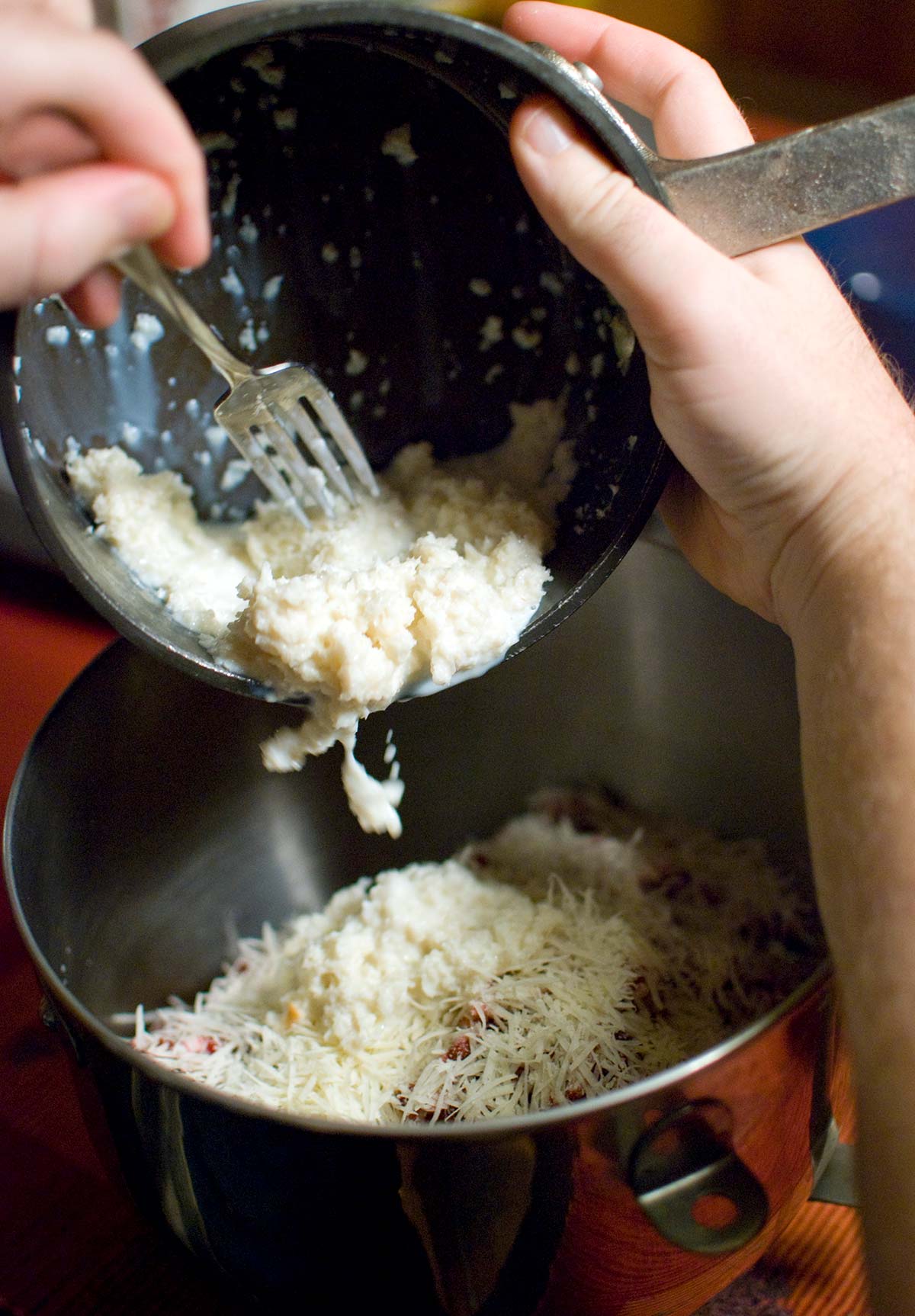
Breadcrumbs will also work, but will not make as nice a venison meatball as with the softened bread.
Finesse Makes Tender Meatballs
The other primary step in making venison meatballs is to not take your aggressions out on the meat mixture. You mix gently, gently, gently, and not completely. It is OK to have some uneven spots. It makes things more interesting. Think cake, not bread.
If you overwork your meatball mixture you will get tough meatballs.
You follow that up by forming the meatballs with equal finesse. Use your palms, not your fingers. Greek meatballs are made with your fingers, Italian ones with the palms. You want a nice round ball that just barely holds together.
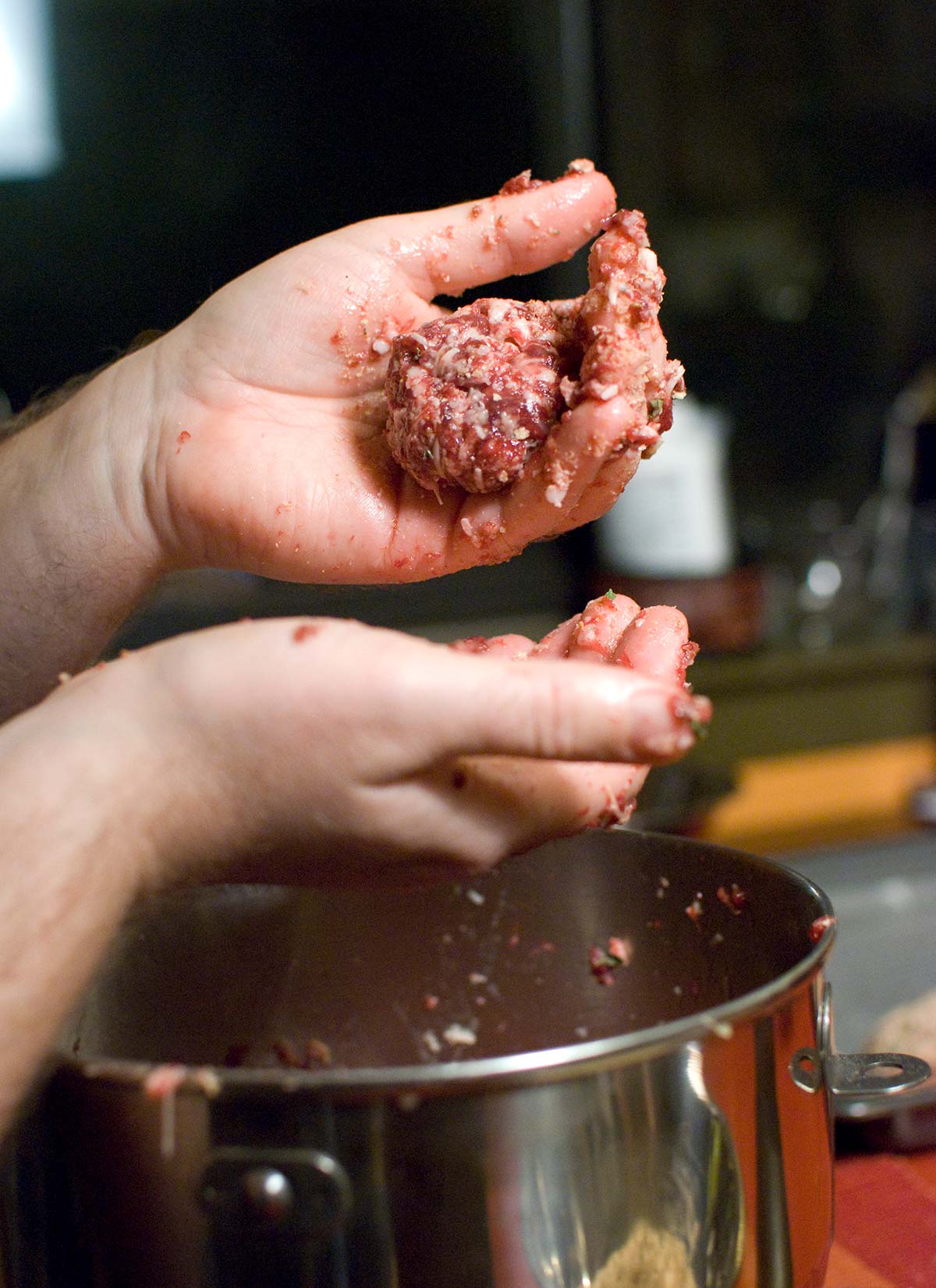
After you form them, you want to roll your venison meatballs in flour or bread crumbs. I like fine bread crumbs because they add some texture to the meatball. These meatballs will deform as you roll them in the crumbs. No worry, just reshape and place on a cookie sheet that has a piece of wax or parchment paper set on it.
Frying Meatballs
To me the answer is pretty obvious, but there are actually a lot of meatball recipes out there where you don’t fry the meatballs before finishing them in sauce. This is blasphemy in the part of New Jersey I grew up in. And when I say “fry” I mean fry, not sauté.
Meatballs and spaghetti is a dish designed to show off — I’m not joking — as newly “wealthy” Italian immigrants found they could serve expensive meatballs and “expensive” factory-made pasta all the time. Much of Old Italy was so poor that these were festival ingredients, not weekly commonplaces.
This means you need lots and lots of oil to properly fry your venison meatballs.
The amount of oil should come up to exactly half the meatball — when they are all in the pan. You remember Archimedes and his bathtub, yes? That means start with about 1/4 inch and get that hot, then add more oil little by little until it is at the halfway point. This keeps the oil hot and prevents the “Saturn’s Ring” of un-fried, or double-fried, sections in the middle of the meatball. It’s an aesthetic thing.
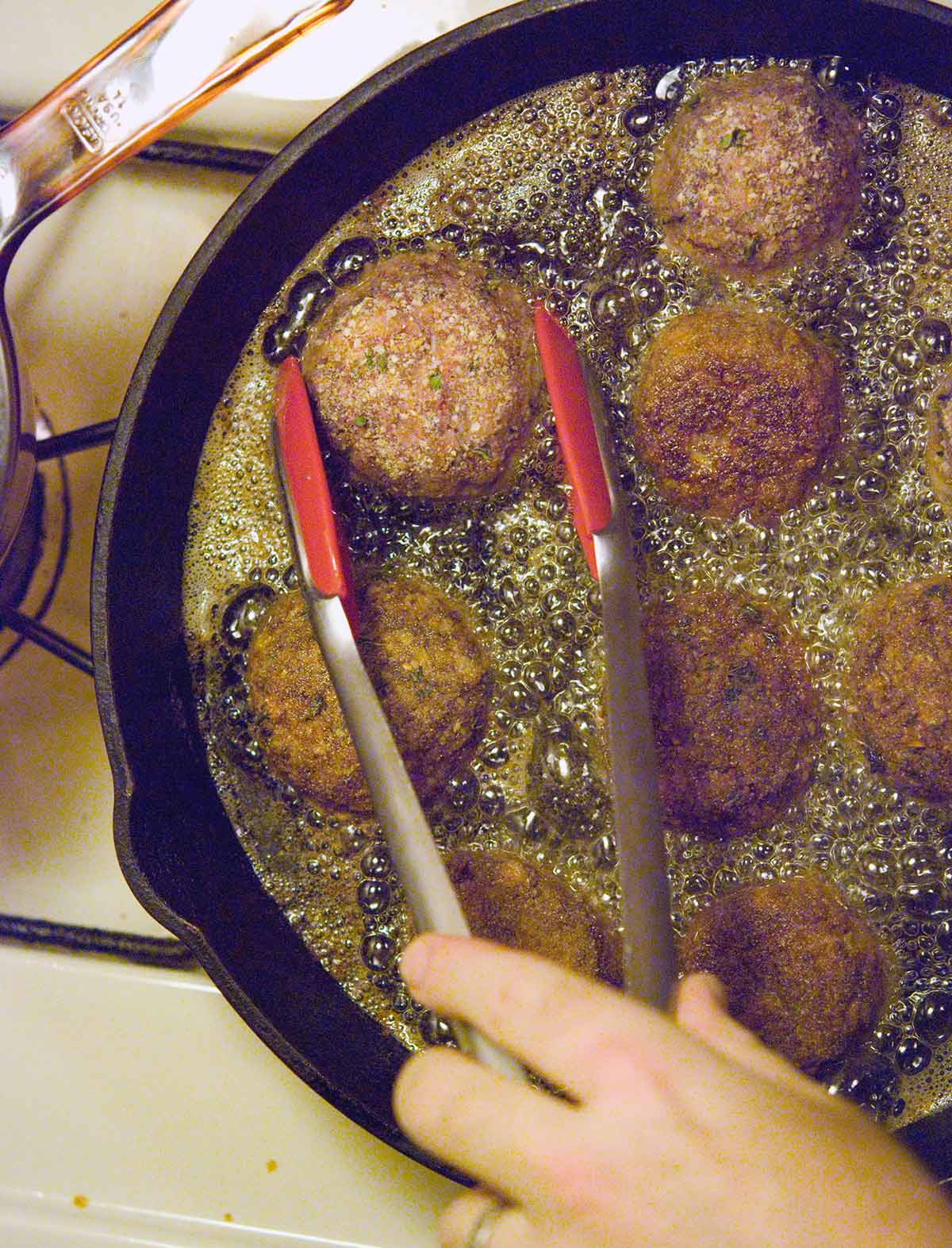
Oh, and flip your meatballs only once, so both sides are golden brown. Remember it does not matter if they are cooked through! You are going to eat your venison meatballs in a sauce, which will finish the cooking.
Once they are done, remove to a rack to drain. This is better than simply putting them on a paper towel, although that’s fine, too.
Baking Meatballs
And yes, you can bake venison meatballs. but you need to be very careful or you will get a nasty mess in your baking sheet when all the fat renders out. This ruins your meatballs. You fix this in a couple ways: Ideally, you bake your meatballs in a mini muffin pan. This preserves their shape.
Second, you bake slow and low. I bake venison meatballs at 300°F only until the interior hits about 145°F. Remember you’ll finish them in sauce later.
Finally, you can absolutely just simmer your venison meatballs in your spaghetti sauce.
Tips for Better Venison Meatballs
Onions are another way to make a juicier meatball, and if you want to use them, add up to 1 cup of minced onion to the meatball mix. But you will need to sweat them in olive oil until they are soft and translucent. Raw onion in a meatball is a terrible idea.
If you are making a classic Italian-American red sauce, with pork shoulder, sausages and meatballs, the pork shoulder can go in as early as you want, but you can absolutely overcook sausage and meatballs. They don’t need more than 20 minutes to cook through, and will start to suffer at an hour, even if cooked gently. (If you do want to make a Sunday gravy, you’ll want to make some sweet Italian and hot Italian sausages.)
This recipe can be doubled, and once browned, venison meatballs will keep a week in the fridge and they freeze well. Arrange on a baking sheet and freeze, then when they are solid, put the meatballs in a heavy freezer bag. They’ll keep about 6 months that way.
You now have perfect venison meatballs, which need only to be finished in your favorite sauce. My choice is this meatless tomato sauce that is like a marinara, only with a little fennel.
Italian Venison Meatballs
Ingredients
- 2 1/2 pounds lean venison, or other meats
- 1 pound pork belly or fatty pork shoulder
- 2/3 cup milk
- 3 slices bread, crusts removed
- 2 eggs
- 1 tablespoon Kosher salt
- 1 tablespoon black pepper
- 1 teaspoon fennel seeds (optional)
- 1 teaspoon dried oregano °
- 2 cloves garlic, minced
- 4 tablespoons grated cheese, pecorino or parmigiana
- 1 1/2 cups bread crumbs
- olive oil for frying
Instructions
OPTIONAL HAND GRINDING STEP
- Chill the venison and pork fat until it is almost freezing by sticking it in the freezer for an hour. Cut both the meat and fat into chunks that will fit in your grinder. Grind through your fine die. If you do not have a meat grinder, you can use a food processor, set on pulse. Don’t crowd the processor and chop the meat in pulses until you get something that looks like ground meat — it will not be as good as with a grinder, but it is easier than hand-mincing everything, which is also an option. Put the meat in the fridge.
MEATBALLS
- Pour the milk into a pot and set it on low heat. Cut the crusts off the stale bread and break it into pieces. Add it to the pot. It will begin to absorb the milk. When it does, turn off the heat and mash everything into a paste. Let it cool to room temperature.
- Put the ground meat into a large bowl, add the salt and spices and herbs, as well as the cheese. Crack the eggs into the bowl, then pour the bread-milk mixture in. With clean hands, gently mix everything together. Do not knead it like bread. Just gently work the mixture — think cake, not bread.
- When it is mostly combined — you need not get everything perfect — grab a palm-full and roll it into a ball with your palms, not your fingers. You want meatballs about 1 1/2 to 2 inches across.
- Gently roll the meatballs in the bread crumbs. You may need to re-shape them before putting them onto a cookie sheet lined with wax or parchment paper.
- When the meatballs are all made, get a large pan ready; I use a big, old cast-iron frying pan. Fill it with about 1/4 inch of oil. I use cheap olive oil. Bring it up to temperature over medium-high heat. You are looking for about 325°F. Set the meatballs in the hot oil, not touching, to fry.
- You want the oil to come up halfway on the meatballs. Add a little oil if need be; don’t worry, you can reuse it later. Fry until nicely browned, then turn them over to brown the other side.
- When cooked, set the meatballs on a paper towel or wire rack to drain. They can be used right away or cooled and then refrigerated for a week, or frozen for several months. How to serve? You could do worse with a marinara sauce, or my Tomato Sauce with Fennel.
Video
Notes
Keys to Success
- If you knead the meatball mixture too much, the meatballs will toughen. That said, they are supposed to be a bit fragile, so you can cut off pieces with your fork as you eat the pasta.
- Should your mixture be too wet, you can add more meat, more bread, more grated cheese, or, in a pinch, some more breadcrumbs.
- I often make large batches of these, brown them, and then freeze for later.
- If you hate frying, you can set the meatballs into a mini muffin tin and bake them at 300°F until browned.
Nutrition
Nutrition information is automatically calculated, so should only be used as an approximation.
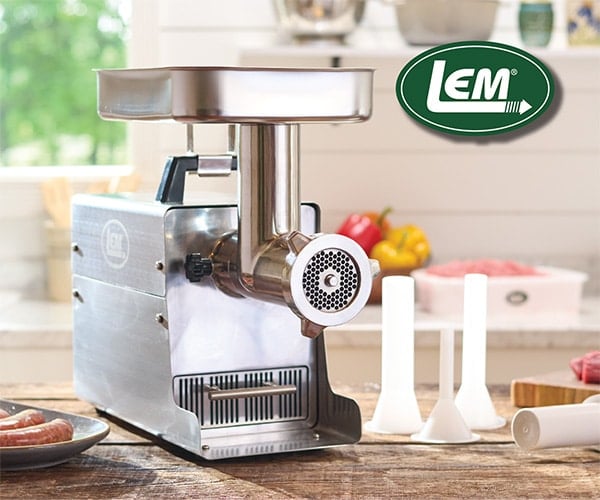


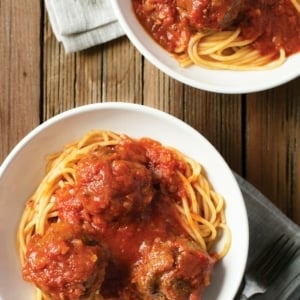
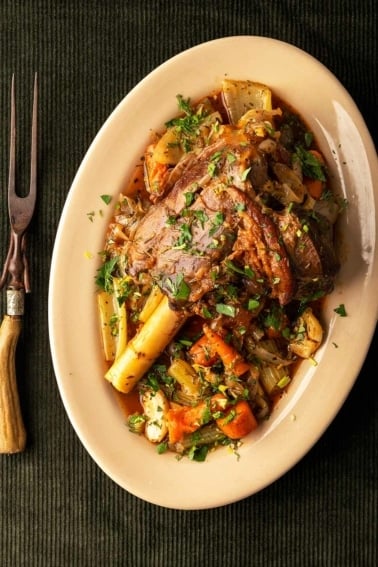
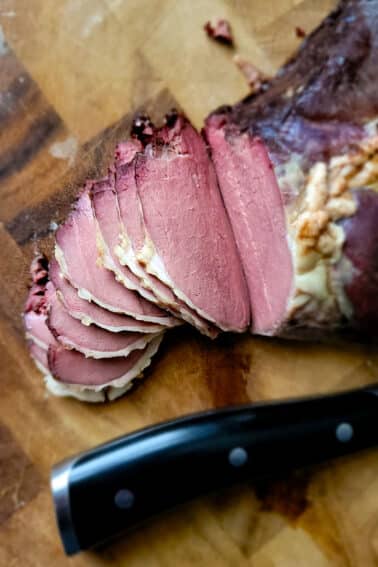
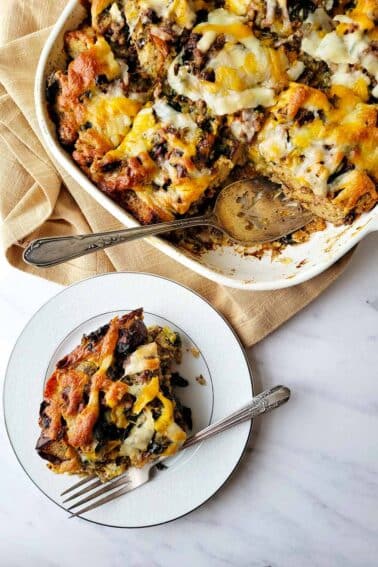
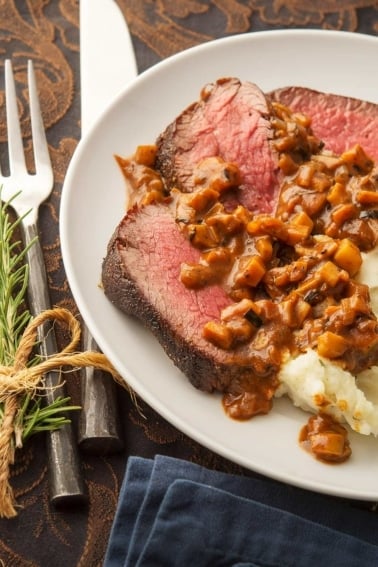
I was today years old when I attempted to fry the meatballs….never too late to learn. Not sure why I ignored it before, my wife gave me a slightly dirty look when I was frying them up and questioned my judgement. Once we sat down to eat she said, “F#$%ing Hank, right again”.
Get yourself some good breadcrumbs, and fry them up and then simmer.
Tried them fried and were great. My wife was blown away, and she’s hard to please.
On the Venison meatballs, I’m glad you mentioned the pork addition. I grew up with a first generation Italian step grandmother, who taught my mother and then me, to make northern Italian meatballs… she would have approved, but she used three different meats, beef, pork… and veal..
I rarely tell people that I use veal in my meatballs, because they become disturbed and sometimes will not eat them! Moose meat also works beautifully. Will try the venison shortly! As always, thank you for both the recipes and the honest personal writing…
I’m looking to make lots an freeze what would the process be Tks Jim Muise
Jim: You maske them, fry or bake them, then freeze on a baking sheet until frozen, then put in a freezer bag.
I just made your recipe. I absolutely Love how they turned out !!!! Followed all your hints… Thank-you for sharing this delicious recipe 🙂
I should add, that I baked my meatballs and I wanted them cooked through. I baked them at 300 degrees for 40 minutes. They were cooked through perfectly, and so moist and tender.